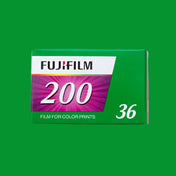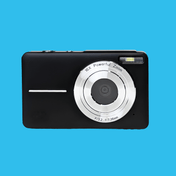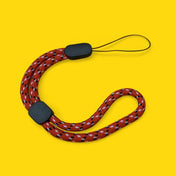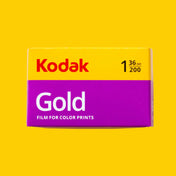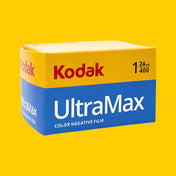10 Tips for Mastering Astrophotography
Have you ever looked up at the night sky and just been awe-struck by its beauty? Capturing that beauty on camera can be a challenge, but with the right tips and techniques, you can master astrophotography. In this post, we'll cover everything from the basics of astrophotography to essential equipment needed for stellar shots. We'll explore various shooting locations around the world and offer techniques for sharp photos and capturing the Milky Way. Plus, we'll share post-processing tips to enhance your night sky pictures. And if you're wondering whether a telescope is necessary for astrophotography, we've got you covered there too. So get ready to take your photography skills to new heights—literally!

Grasping the Basics of Astrophotography
Understanding the significance of prolonged exposures in capturing celestial objects is crucial for beginners. Mastering the correct camera settings for astrophotography is essential to produce high-quality images. Employing techniques to achieve sharp focus and prevent blur in night sky pictures can greatly improve the outcome. Choosing the right equipment and lenses is integral to successful astrophotography. Additionally, utilising smartphone apps to locate celestial objects in the night sky can significantly aid in the process.
Defining Astrophotography and Its Types
Astrophotography encompasses diverse types, from star trails to meteor showers. Light pollution significantly impacts visibility, while understanding the earth’s rotation is crucial for night sky photography. Using the right equipment and camera settings is essential for capturing the milky way. Additionally, post-processing techniques in Adobe Photoshop play a vital role in enhancing astrophotography images for beginners. Furthermore, some enthusiasts use their iPhone for astrophotography, highlighting its accessibility and versatility.
Importance of Understanding Light and Darkness
Understanding the night sky's dynamic range and the celestial objects within it is crucial for capturing captivating astrophotography. Leveraging the north star as a focal point and utilising techniques during eclipses and bright star visibility are essential. Choosing the right location and timing to avoid light pollution is key, along with using smartphone apps and headlamps for optimal results.

Delving into Essential Equipment for Astrophotography
Understanding how sensor type and pixels impact image quality is crucial in astrophotography. Must-have accessories like tripods and lenses are essential for capturing clear, stunning night sky photos. Utilising manual mode, long shutter speeds, and the right aperture are key for successful night sky photography. Moreover, choosing the right DSLR camera and smartphone apps can greatly enhance astrophotography results. Post-processing techniques using Lightroom and Photoshop are also valuable for perfecting astrophotography images.
Choosing the Right Camera for Your Astrophotography Needs
When it comes to astrophotography, the choice of camera is crucial. Understanding the impact of ccd and sensor size on image quality is essential. Beginners should consider tips for choosing the right DSLR camera, utilising the right lenses and ISO settings, and understanding the importance of dynamic range for astrophotography. Additionally, iPhone users can benefit from utilising the right smartphone apps and accessories for capturing stunning astrophotography shots.
Must-Have Accessories for Stellar Shots
When capturing stunning stellar shots, the right accessories are crucial. Whether it's choosing the optimal tripod, headlamp, or lenses, each accessory plays a significant role. Techniques for photographing nebulae, star clusters, and celestial objects rely heavily on these tools. Using the correct DSLR camera, lenses, and smartphone apps is imperative for successful astrophotography. Moreover, understanding how the right equipment, camera settings, and light pollution impact visibility is essential. Lastly, mastering the significance of appropriate camera settings, lenses, and focal length is key to achieving remarkable astrophotography results.

Exploring Various Shooting Locations
When capturing astrophotos, beginners must prioritize choosing ideal shooting locations. Factors like light pollution and visibility impact the quality of images. Researching the best international locations for astrophotography is essential for breathtaking shots. Utilise the iPhone's camera capabilities and appropriate apps to capture celestial beauty in the right location. Understanding the significance of timing and equipment settings is crucial for shooting vivid astronomical scenes.
Factors to Consider When Choosing a Shooting Location
When selecting a shooting location for astrophotography, understanding the impact of light pollution and visibility is crucial. The right location, timing, and visibility are significant for capturing celestial objects, meteor showers, and the Milky Way. Additionally, choosing the right equipment, camera settings, and focal length greatly affects astrophotography visibility. Utilising techniques to find the ideal location, timing, and visibility is essential for successful night sky photography. Beginners should remember to consider the impact of light pollution and visibility when choosing the shooting location.
Best Locations for Astrophotography Around the World
When exploring astrophotography locations, from Alaska to other parts of the world, consider capturing the night sky, milky way, and celestial objects. Understand the impact of light pollution on visibility. Techniques for finding the right location, visibility, and timing are crucial. Ensure the significance of the right equipment, camera settings, and lenses for visibility. Remember that beginners can use an iPhone for astrophotography.
Honing Techniques for Sharp Photos
Understanding the prerequisites for sharp focus, avoiding blur, and capturing celestial objects is essential for perfecting astrophotography. Using the correct camera settings, lenses, and equipment plays a pivotal role in achieving sharp and detailed night sky photographs. Mastering long exposures, shutter speed, and camera settings is crucial for successful astrophotography. It's imperative to comprehend the impact of the earth’s rotation on photography, and how to adapt camera settings and equipment for sharp astrophotography.
Focusing on the Stars: A Detailed Guide
For capturing sharp and awe-inspiring celestial objects, utilise smartphone apps to locate them and the right equipment. Achieve sharp focus through long exposures in the manual mode and suitable location. Utilise long shutter speeds for capturing celestial objects with bright star trails. Employ the right camera settings and lenses tailored to astrophotography needs. Beginners can also make use of iPhone apps for locating celestial objects.
Long Exposure Techniques for Creative Effects
Experimenting with extended exposures allows for capturing the vast dynamic range of the night sky, including various celestial events like meteor showers and eclipses. By harnessing long exposures and the earth's rotation, photographers can produce captivating star trails that mesmerise viewers. Mastering long exposure techniques not only minimises light pollution but also enables the portrayal of the cosmos in its full grandeur. With the right equipment and camera settings, photographers, including beginners and those using an iPhone, can adeptly employ long exposures to capture celestial objects in all their glory.
Capturing the Milky Way: An In-depth Approach
When capturing the Milky Way, beginners should learn techniques that showcase its celestial splendor. Using the iPhone or a DSLR, mastering long exposures and camera settings is key. Employing astrophotography lenses and long shutter speeds is essential for capturing the Milky Way's intricate details. Utilising the earth’s rotation and the right equipment with sharp focus will result in stunning photos. Experimenting in different shooting locations will help achieve diverse and captivating shots.
Strategies for Photographing the Milky Way
When photographing the Milky Way, it's essential to employ the right equipment, camera settings, and lenses for optimal results. Utilise long shutter speeds, focal length, and the earth’s rotation to capture the intricacies of the Milky Way. Master the use of smartphone apps to pinpoint the Milky Way and ensure you have the right equipment. Additionally, employing long exposures and the manual mode from the ideal location can significantly enhance your Milky Way shots. Lastly, utilising the right camera settings and lenses is crucial for capturing the Milky Way with sharp focus.
Dealing with Challenges in Milky Way Photography
When capturing the Milky Way, overcoming light pollution is crucial. Varying visibility conditions demand mastering specific techniques. Utilising long exposures and the right camera settings is essential, despite light pollution. Employing the earth’s rotation and long shutter speeds is key in Milky Way photography. Additionally, smartphone apps, the right equipment, and camera settings play a vital role in overcoming challenges. Beginners must understand these aspects to excel, while iPhone users can use specialised apps for assistance.
Enhancing Your Night Sky Pictures: Post-Processing Tips
Enhancing your night sky pictures involves mastering basic editing techniques in Adobe Photoshop and Lightroom. By utilising these tools, including advanced post-processing techniques, you can enhance the dynamic range and clarity of your astrophotography. Employing advanced post-processing techniques in Adobe Photoshop and Lightroom is essential for achieving professional results in astrophotography. With the right knowledge and skills in post-processing, beginners and iPhone users can take their night sky pictures to the next level.
Basic Editing Techniques to Improve Your Astrophotography
Enhancing your astrophotography starts with mastering basic editing techniques in Adobe Photoshop. Utilise Lightroom for a fundamental edit, including celestial objects. Employ Photoshop to enhance dynamic range and clarity in your astrophotography pictures. Smartphone apps, Lightroom, and Adobe Photoshop are essential tools for enhancing your astrophotography pictures. Ensure you're using the right camera settings, sensor, and pixels for astrophotography and basic editing techniques.
Advanced Processing Techniques for Professional Results
To achieve professional results in astrophotography, mastering advanced post-processing techniques is essential. Utilise Lightroom, Adobe Photoshop, and smartphone apps for enhancing the dynamic range and clarity of your astrophotography pictures. Employ advanced editing techniques in Photoshop to enhance celestial objects and achieve professional results. Ensure the right camera settings, sensor, and pixels are employed for astrophotography, and master advanced post-processing techniques to elevate the quality of your images. Embracing these techniques will take your astrophotography skills to a whole new level.
How Important is a Telescope for Astrophotography?
Understanding the significance of telescopes in astrophotography is essential. They enable capturing celestial objects and the night sky with precision. Utilise telescopes, DSLRs, CCDs, and the right camera settings to capture nebulae and other celestial phenomena. Additionally, smartphone apps, headlamps, and the correct telescope enhance astrophotography results.
Conclusion
To master astrophotography, it's important to grasp the basics and understand the equipment needed. Choosing the right camera and accessories can make a significant difference in the quality of your shots. Additionally, exploring various shooting locations and honing specific techniques will help you capture stunning images of the night sky. Don't forget to give attention to capturing the Milky Way, as it requires a detailed approach and strategies. Once you have your photos, enhancing them through post-processing techniques can take your astrophotography to the next level. And while a telescope is not essential, it can enhance your experience and allow for more detailed images. So grab your camera, head to a dark location, and start capturing the beauty of the cosmos!






